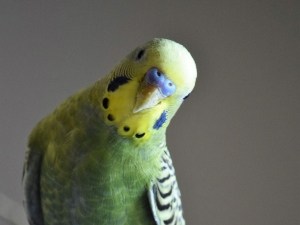
Birds are not only pretty to look at, but they also communicate how they feel and their general health through how they look.
If you notice something odd in your bird’s appearance then you’d be right to be concerned.
This article is a look into why your budgies cere is turning black
Table of Contents
Budgie cere turning black:
Budgie’s ceres can be a range of different colors, and the color of these body parts is usually determined by the bird’s age, whether they are male or female, or their overall health.
There are a few reasons why your budgie’s cere may be turning black. Below are reasons why this may be happening:
Female reproductive cycle:
If your bird is a female, and its cere is turning black, then the bird may simply be reproductively active.
Female budgies have light blue ceres when young but when they reach adulthood, and are ready to mate and reproduce, the bird’s ceres will start to turn dark brown, almost black.
Their ceres start to turn this color because the bird’s body starts to produce excess estrogen, which is a female reproductive hormone, this reproductive hormone causes the cere to darken drastically.
What to do:
This doesn’t mean that there is anything wrong with the bird, it simply means that the bird is now old enough to breed and is ready to breed.
That being said, long-term health issues can develop if your bird stays in this condition for a long time, issues like hernia and other reproductive tract diseases.
The cere should change back to normal once the mating season is over.
Iodine deficiency:
One of the other reasons why your budgie’s cere may have turned black is that the bird has an iodine deficiency.
Your bird may develop a nutrient deficiency if the bird has not been eating a well-balanced diet. Birds who are on a seed-based, or on an all-seed diet, are more likely to suffer from this deficiency.
What to do:
While it is recommended that you take your bird to the vet for an examination you can test to see if your bird is suffering from an iodine deficiency by supplementing iodine into the bird’s diet to see if the cere goes back to normal.
You can do this by adding iodine into the bird’s water and seeing if the cere goes back to normal after a week or two.
The bird’s body should respond quickly to the iodine, if it is lacking in this mineral, once you supplement iodine into the bird’s water.
You can keep the bird’s cere looking normal by giving the bird an iodine block to nibble on. The bird will nibble and take in just as much as it needs to
However, if the bird’s cere does not change color after supplementing the iodine into the bird’s diet, then a nutrient deficiency is not what is wrong with the bird and you may need to take the bird to the vet.
Testicular cancer:
If you have a male bird then the reason why your male’s cere may turn a dark brown or even black color is if the bird has testicular cancer.
What to do:
This is not something you can treat at home, you’d need to take the bird to the vet to be assessed and treated for this condition.
If it is found that your bird has testicular cancer then the vet may treat the bird by injecting Lupron into the bird’s body.
In addition to the cancer treatment, your vet may also prescribe anti-inflammatory medications for any pain that your bird may be suffering from.
If you enjoyed this article then you may also be interested in other bird related articles. Here are some articles that you may be interested in: Budgie Cere White, Why Is My Budgie’s Beak Red?, Can Budgies Bruise Their Beaks?, Can Birds Get Beak Burn?, Can Birds Bruise Their Beaks?

